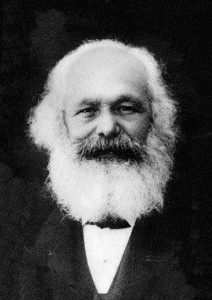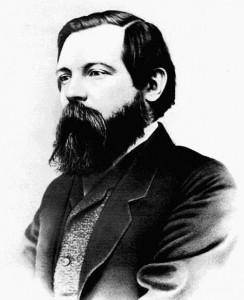4 Chapter 4. Society and Modern Life
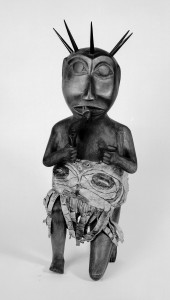
Learning Objectives
- Compare ways of understanding the evolution of human societies.
- Describe the difference between preindustrial, industrial, postindustrial and postnatural societies.
- Understand how a society’s relationship to the environment impacts societal development.
4.2. Theoretical Perspectives on the Formation of Modern Society
- Describe Durkheim’s functionalist view of modern society.
- Understand the critical sociology view of modern society.
- Explain the difference between Marx’s concept of alienation and Weber’s concept of rationalization.
- Identify how feminists analyze the development of society.
4.3. Living in Capitalist Society
- Understand the relationship between capitalism and the incessant change of modern life.
Introduction to Society
In 1900 a young anthropologist, John Swanton, transcribed a series of myths and tales — known as qqaygaang in the Haida language — told by the master Haida storyteller Ghandl. The tales tell stories of animal and human transformations, of heroes who marry birds, of birds who take off their skins and become women, of mussels who manifest the spirit form of whales, and of poles climbed to the sky.
After she’d offered him something to eat, Mouse Woman said to him, “When I was bringing a bit of cranberry back from my berry patch, you helped me. I intend to lend you something I wore for stalking prey when I was younger.”
She brought out a box. She pulled out four more boxes within boxes. In the innermost box was the skin of a mouse with small bent claws. She said to him, “Put this on.”
Small though it was, he got into it. It was easy. He went up the wall and onto the roof of the house. And Mouse Woman said to him, “You know what to do when you wear it. Be on your way” (Ghandl, quoted in Bringhurst, 2011).
To the ear of contemporary Canadians, these types of tales often seem confusing. They lack the standard inner psychological characterization of protagonists and antagonists, the “realism” of natural settings and chronological time sequences, or the plot devices of man against man, man against himself, and man against nature. However, as Robert Bringhurst (2011) argues, this is not because the tales are not great literature or have not completely “evolved.” In his estimation, Ghandl should be recognized as one of the most brilliant storytellers who has ever lived in Canada. Rather, it is because the stories speak to, and from, a fundamentally different experience of the world: the experience of nomadic hunting and gathering people as compared to the sedentary people of modern capitalist societies. How does the way we tell stories reflect the organization and social structures of the societies we live in?
Ghandl’s tales are told within an oral tradition rather than a written or literary tradition. They are meant to be listened to, not read, and as such the storytelling skill involves weaving in subtle repetitions and numerical patterns, and plays on Haida words and well-known mythological images rather than creating page-turning dramas of psychological or conflictual suspense. Bringhurst suggests that even compared to the Indo-European oral tradition going back to Homer or the Vedas, the Haida tales do not rely on the auditory conventions of verse. Whereas verse relies on acoustic devices like alliteration and rhyming, Haida mythic storytelling was a form of noetic prosody, relying on patterns of ideas and images. The Haida, as a preagricultural people, did not see a reason to add overt musical qualities to their use of language. “[V]erse in the strictly acoustic sense of the word does not play the same role in preagricultural societies. Humans, as a rule, do not begin to farm their language until they have begun to till the earth and to manipulate the growth of plants and animals.” As Bringhurst puts it, “myth is that form of language in which poetry and music have not as yet diverged“(Bringhurst, 2011, italics in original).
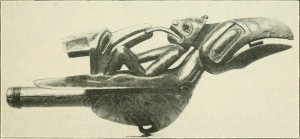
Perhaps more significantly for sociologists, the hunting and gathering lifestyle of the Haida also produces a very different relationship to the natural world and to the non-human creatures and plants with which they coexisted. This is manifest in the tales of animal-human-spirit transformations and in their moral lessons, which caution against treating the world with disrespect. With regard to understanding Haida storytelling, Bringhurst argues that:
following the poetry they [hunting gathering peoples] make is more like moving through a forest or a canyon, or waiting in a blind, than moving through an orchard or field. The language is often highly ordered, rich, compact — but it is not arranged in neat, symmetrical rows (2011).
In other words, for the hunter who follows animal traces through the woods, or waits patiently for hours in a hunting blind or fishing spot for wild prey to appear, the relationship to the prey is much more akin to “putting on their skins” or spiritually “becoming-animal” than to be a shepherd raising livestock. A successful hunting and gathering people would be inclined to study how animals think from the inside, rather than controlling or manipulating them from the outside. For the Haida, tales of animal transformations would not seem so fantastic or incomprehensible as they do to modern people who spend most of their life indoors. They would be part of their “acutely personal relations with the wild” (Bringhurst, 2011).
Similarly, the Haida ethics, embodied in their tales and myths, acknowledge a complex web of unwritten contracts between humans, animal species, and spirit-beings.
The culture as Ghandl describes it depends — like every hunting culture — not on control of the land as such but on control of the human demands that are placed upon it (Bringhurst, 2011).
In the tales, humans continually confront a world of living beings and forces that are much more powerful and intelligent than they are, and who are quick to take offense at human stupidity and hubris.
What sociologists learn from the detailed studies of the Haida and their literature is how a fundamentally different social relationship to the environment affects the way people think and how they see their place in the world. Nevertheless, although the traditional Haida society of Haida Gwaii in the Pacific Northwest is very different from that of contemporary post-industrial Canada, both can be seen as different ways of expressing the human need to cooperate and live together in order to survive. For the sociologist, this is a lesson in how the type of society one lives in — its scale and social structure — impacts one’s experience of the world at a very fundamental perceptual level.
4.1. Types of Societies

Haida, Maasai, modern Canadians — each is a society. But what does this mean? Exactly what is a society? In sociological terms, a society refers to a group of people who interact in a definable territory and share the same culture. In practical, everyday terms, societies consist of various types of institutional constraint and coordination exercised over our choices and actions. The type of society we live in determines the nature of these types of constraint and coordination. The nature of our social institutions, the type of work we do, the way we think about ourselves and the structures of power and social inequality that order our life chances are all products of the type of society we live in and thus vary globally and historically.
The founder of sociology, August Comte (1798–1857), provided the first sociological theory of the evolution of human societies. His best known sociological theory was the law of three stages, which held that all human societies and all forms of human knowledge evolve through three distinct stages from primitive to advanced: the theological, the metaphysical, and the positive. The key variable in defining these stages was the way a people conceptualized causation or how they understood their place in the world.
In the theological stage, humans explain causes in terms of the will of anthropocentric gods (the gods cause things to happen). In the metaphysical stage, humans explain causes in terms of abstract, “speculative” ideas like nature, natural rights, social contracts, or “self-evident” truths. This was the basis of Comte’s critique of the Enlightenment philosophers whose ideas about natural rights and freedoms had led to the French Revolution but also to the chaos of its aftermath. In his view, the “negative” or metaphysical knowledge of the philosophers was based on dogmatic ideas that could not be reconciled when they were in contradiction. This lead to inevitable conflict and moral anarchy. Finally, in the positive stage, humans explain causes in terms of positivist, scientific observations and laws (i.e., “positive” knowledge based on propositions limited to what can be empirically observed). Comte believed that this would be the final stage of human social evolution because positivist science could empirically determine how society should be organized. Science could reconcile the division between political factions of order and progress by eliminating the basis for moral and intellectual anarchy. The application of positive philosophy would lead to the unification of society and of the sciences (Comte, 1830/1975).
Karl Marx offered another model for understanding the evolution of types of society. Marx argued that the evolution of societies from primitive to advanced was not a product of the way people thought, as Comte proposed, but of the power struggles in each epoch between different social classes over control of property. The key variable in his analysis was the different modes of production or “material bases” that characterized different forms of society: from hunting and gathering, to agriculture, to industrial production. This historical materialist approach to understanding society explains both social change and the development of human ideas in terms of underlying changes in the mode of production. In other words the type of society and its level of development is determined principally by how a people produces the material goods needed to meet its needs. Their world view, including the concepts of causality described by Comte, followed from the way of thinking involved in the society’s mode of production.
On this basis, Marx categorized the historical types of society into primitive communism, agrarian/slave societies, feudalism, and capitalism. Primitive communists, for example, are hunter gatherers like the Haida whose social institutions and worldview develop in sync with their hunting and gathering relationship to the environment and its resources. They are defined by their hunter-gatherer mode of production.
Marx went on to argue that the historical transformations from one type of society to the next are generated by the society’s capacity to generate economic surpluses and the conflicts and tensions that develop when one class monopolizes economic power or property: land owners over agricultural workers, slave owners over slaves, feudal lords over serfs, or capitalists over labourers. These class dynamics are inherently unstable and eventually lead to revolutionary transformations from one mode of production to the next.
To simplify Comte’s and Marx’s schemas, we might examine the way different types of society are structured around their relationship to nature. Sociologist Gerhard Lenski (1924-2015) defined societies in terms of their technological sophistication. With each advance in technology the relationship between humans and nature is altered. Societies with rudimentary technology are at the mercy of the fluctuations of their environment, while societies with industrial technology have more control over their environment, and thus develop different cultural and social features. On the other hand, societies with rudimentary technology make relatively little impact on their environment, while industrial societies transform it radically. The changes in the relationship between humans and their environment in fact goes beyond technology to encompass all aspects of social life, including its mental life (Comte) and material life (Marx). Distinctions based on the changing nature of this relationship enable sociologists to describe societies along a spectrum: from the foraging societies that characterized the first 90,000 years of human existence to the contemporary postnatural, anthropocene societies in which human activity has made a substantial impact on the global ecosystem.
Preindustrial Societies
Before the Industrial Revolution and the widespread use of machines, societies were small, rural, and dependent largely on local resources. Economic production was limited to the amount of labour a human being could provide, and there were few specialized occupations. Production was (for the most part) for immediate consumption, although evidence of trade between groups also goes back the earliest archaeological records. The very first occupation was that of hunter-gatherer.
Hunter-Gatherer Societies
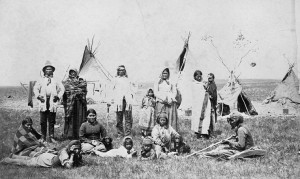
Of the various types of preindustrial societies, Hunter-gatherer societies demonstrate the strongest dependence on the environment. As the basic structure of all human society until about 10,000–12,000 years ago, these groups were based around kinship or tribal affiliations. Hunter-gatherers relied on their surroundings for survival — they hunted wild animals and foraged for uncultivated plants for food. They survived on what nature provided and immediately consumed what they obtained. They produced no surpluses. When resources became scarce, the group moved to a new area to find sustenance, meaning they were nomadic. The plains Indians of North America, moved frequently to follow their main source of food. Some groups, like the Haida, lived off of abundant, non-depleting resources like fish, which enabled them to establish permanent villages where they could dwell for long periods of the year before dispersing to summer camps. (See “People of the Far Northwest” below).
Most of the caloric intake of hunters and gatherers came from foraging for edible plants, fruits, nuts, berries, and roots. The largely meat-based diet of the Inuit is a notable exception. Richard Lee (1978) estimated that approximately 65% of the hunter-gatherer diet came from plant sources, which had implications for the gender egalitarianism of these societies. With the earliest economic division of labour being between male hunters and women gatherers, the fact that women accounted for the largest portion of the food consumed by the community ensured the importance of their status within the group. On the other hand, early reports of missionaries among the Algonquins of the north shore of Lake Superior observed women with their noses cut off and small parts of their scalp removed as punishment for adultery, suggesting that (at least among some groups) female subordination was common. Male Algonquins often had seven or eight wives (Kenton, 1954).
As a result of their unique relationship and dependence on the environment for sustenance, the ideal type or model that characterized hunter-gatherer societies includes several common features (Diamond, 1974):
- The distribution of economic surplus is organized on a communalistic, shared basis in which there is little private property, work is cooperative, and gift giving is extensive. The use of resources was governed by the practice of usufruct, the distribution of resources according to need (Bookchin, 1982).
- Power is dispersed either shared equally within the community, or shifting between individual members based on individual skills and talents.
- Social control over the members of society is exercised through shared customs and sentiment rather than through the development of formal law or institutions of law enforcement.
- Society is organized on the basis of kinship and kinship ties so there are few, if any, social functions or activities separate from family life.
- There is little separation between the spheres of intimate private life and public life. Everything is a matter of collective concern.
- The life of the community is all “personal” and emotionally charged. There is little division of labour so there is no social isolation.
- Art, story telling, ethics, religious ritual and spirituality are all fused together in daily life and experience. They provide a common means of expressing imagination, inspiration, anxiety, need and purpose.
One interesting aspect of hunter-gatherer societies that runs counter to modern prejudices about “primitive” society, is how they developed mechanisms to prevent their evolution into more “advanced” sedentary, agricultural types of society. For example, in the “headman” structure, the authority of the headman or “titular chief” rests entirely on the ongoing support and confidence of community members rather than permanent institutional structures. This is a mechanism that actively wards off the formation of permanent institutionalized power (Clastres, 1987). The headman’s main role is as a diplomatic peacemaker and dispute settler, and he held sway only so long as he maintained the confidence of the tribe. Beyond a headman’s personal prestige, fairness in judgement and verbal ability, there was no social apparatus to enable a permanent institutional power or force to emerge.
Similarly the Northwest Pacific practice of the potlatch, in which goods, food, and other material wealth were regularly given away to neighboring bands, provided a means of redistributing wealth and preventing permanent inequality from developing. Evidence also shows that even when hunter-gatherers lived in close proximity with agriculturalists they were not motivated to adopt the agricultural mode of production because the diet of early agricultural societies was significantly poorer in nutrition (Stavrianos, 1990; Diamond, 1999). Recent evidence from archaeological sites in the British Isles suggests for example that early British hunter-gatherers traded for wheat with continental agriculturalists 2,000 years before agricultural economies were adopted in ancient Britain (Smith et. al., 2015; Larson, 2015). They had close contact with agriculturalists but were not inclined to adopt their sedentary societal forms, presumably because there was nothing appealing about them.
These societies were common until several hundred years ago, but today only a few hundred remain in existence, such as indigenous Australian tribes sometimes referred to as “aborigines,” or the Bambuti, a group of pygmy hunter-gatherers residing in the Democratic Republic of Congo. Still, in 2014, members of the Amazonian Mashco-Piro clan emerged out of their voluntary isolation at the border of Peru and Brasil to make “first contact” with the Brazilian government’s Indigenous people’s authority (Funai) in order to seek protection from suspected drug-traffickers (Collins, 2014). Hunter-gatherer groups largely disappeared under the impact of colonization and European diseases, but it is estimated that another 75 uncontacted tribes still inhabit the Amazonian rainforest.
Making Connections: Big Picture
People of the Far Northwest
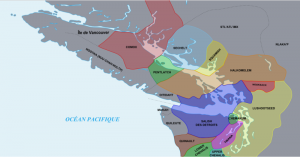
The Pacific Northwest region was utterly separate from the Plains and other cultural zones. Its peoples were many and they shared several cultural features that were unique to the region.
By the 1400s there were at least five distinct language groups on the West Coast, including Tlingit, Haida, Tsimshian, Wakashan, and Salishan, all of which divide into many more dialects. However, these differences (and there are many others) are overshadowed by cultural similarities across the region. An abundance of food from the sea meant that coastal populations enjoyed comparatively high fertility rates and life expectancy. Population densities were, as a consequence, among the highest in the Americas.
The people of the Pacific Northwest do not share the agricultural traditions that existed east of the Rockies, nor did they influence Plains and other cultures. There was, however, a long and important relationship of trade and culture between the coastal and interior peoples. In some respects it is appropriate to consider the mainland cultures as inlet-and-river societies. The Salish-speaking peoples of the Straight of Georgia (Salish Sea) share many features with the Interior Salish (Okanagan, Secwepemc, Nlaka’pamux, Stl’atl’imx), though they are not as closely bound as the peoples of the Skeena and Stikine Valleys (which include the Tsimshian, the Gitxsan, and the Nisga’a). Running north of the Interior Salish nations through the Cariboo Plateau, and flanked on the west by the Coast Mountain Range, are societies associated with the Athabascan language group. Some of these peoples took on cultural habits and practices more typically associated with the Pacific Northwest coastal traditions than with the northern Athabascan peoples who cover a swath of territory from Alaska to northern Manitoba. In what is now British Columbia, the Tsilhqot’in, the Dakelh, Wet’suwet’en, and Sekani were part of an expansive, southward-bound population that sent offshoots into the Nicola Valley and deep into the southwest of what is now the United States.
Most coastal and interior groups lived in large, permanent towns in the winter, and these villages reflected local political structures. Society in Pacific Northwest groups was generally highly stratified and included, in many instances, an elite, a commoner class, and a slave class. The Kwakwaka’wakw, whose domain extended in pre-contact times from the northern tip of Vancouver Island south along its east coast to Quadra Island and possibly farther, assembled kin groups (numayms) as part of a system of social rank in which all groups were ranked in relation to others. Additionally, each kin group “owned” names or positions that were also ranked. An individual could hold more than one name; some names were inherited and others were acquired through marriage. In this way, an individual could acquire rank through kin associations, although kin groups themselves had ascribed ranks. Movement in and out of slavery was even possible.
The fact that slavery existed points to the competition that existed between coastal rivals. The Haida, Tsimshian, Haisla, Nuxalk, Heiltsuk, Wuikinuxv (Oowekeeno), Kwakwaka’wakw, Pentlatch/K’ómoks, and Nuu-chah-nulth regularly raided one another and their Stó:lō neighbours. Many of the winter towns were in some way or other fortified and, indeed, small stone defensive sniper blinds can still be discerned in the Fraser Canyon. The large number of oral traditions that arise from this era regularly reference conflict and the severe loss of personnel. Natural disasters are also part of the oral tradition: they tell of massive and apocalyptic floods as well as volcanic explosions and other seismic (and tidal) events that had tremendous impacts on local populations.
The practice of potlatch (a public feast held to mark important community events, deaths, ascensions, etc.) is a further commonality. It involved giving away property and thus redistributing wealth as a means for the host to maintain, reinforce, and even advance through the complex hierarchical structure. In receiving property at a potlatch an attendee was committing to act as a witness to the legitimacy of the event being celebrated. The size of potlatching varied radically and would evolve along new lines in the post-contact period, but the outlines and protocols of this cultural trademark were well-elaborated centuries before the contact moment. Potlatching was universal among the coastal peoples and could also be found among more inland, upriver societies as well.
Horticulture — the domestication of some plants — was another important source of food. West Coast peoples and the nations of the Columbia Plateau (which covers much of southern inland British Columbia), like many eastern groups, applied controlled burning to eliminate underbrush and open up landscape to berry patches and meadows of camas plants that were gathered for their potato-like roots. This required somewhat less labour than farming (although harvesting root plants is never light work), and it functioned within a strategy of seasonal camps. Communities moved from one food crop location to another for preparation and then, later, harvest. A great deal of the land seized upon by early European settlers in the Pacific Northwest included these berry patches and meadows. These were attractive sites because they had been cleared of huge trees and consisted of mostly open and well-drained pasture. Europeans would see these spaces as pastoral, natural, and available rather than anthropogenic (human-made) landscapes — the product of centuries of horticultural experimentation.
“People of the Far Northwest” excerpted from John Belshaw, 2015, Canadian History: Pre-Confederation, (Vancouver: BCCampus). Used under Creative Commons Attribution 4.0 International License.
Horticultural and Pastoral Societies
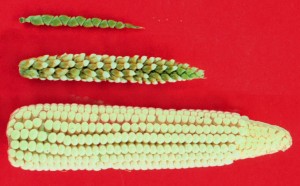
Around 10,200 BCE, another type of society developed in ancient Anatolia, (now part of Turkey), based on the newly developed capacity for people to grow and cultivate plants. Previously, the depletion of a region’s crops or water supply forced hunter-gatherer societies to relocate in search of food sources. Horticultural societies formed in areas where rainfall and other conditions provided fertile soils to grow stable crops with simple hand tools. Their increasing degree of control over nature decreased their dependence on shifting environmental conditions for survival. They no longer had to abandon their location to follow resources and were able to find permanent settlements. The new horticultural technology created more stability and dependability, produced more material goods and provided the basis for the first revolution in human survival: the neolithic revolution.
Changing conditions and adaptations also led some societies to rely on the domestication of animals where circumstances permitted. Roughly 8,000 BCE, human societies began to recognize their ability to tame and breed animals. Pastoral societies rely on the domestication of animals as a resource for survival. Unlike earlier hunter-gatherers who depended entirely on existing resources to stay alive, pastoral groups were able to breed livestock for food, clothing, and transportation, creating a surplus of goods. Herding, or pastoral, societies remained nomadic because they were forced to follow their animals to fresh feeding grounds.
With the emergence of horticultural and pastoral societies during the neolithic revolution, stable agricultural surpluses began to be generated, population densities increased, specialized occupations developed, and societies commenced sustained trading with other local groups. Feuding and warfare also grew with the accumulation of wealth. One of the key inventions of the neolithic revolution therefore was structured, social inequality: the development of a class structure based on the appropriation of surpluses. A social class can be defined as a group that has a distinct relationship to the means of production. In neolithic societies, based on horticulture or animal husbandry as their means of production, control of land or livestock became the first form of private property that enabled one relatively small group to take the surpluses while another much larger group produced them. For the first time in history, societies were divided between producing classes and owning classes. Moreover, as control of land was the source of power in neolithic societies, ways of organizing and defending it became a more central preoccupation. The development of permanent administrative and military structures, taxation, as well as the formation of specialized priestly classes to spiritually unite society originated on the basis of the horticultural and pastoral relationship to nature.
Agricultural Societies
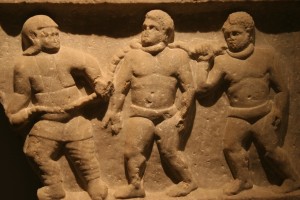
While pastoral and horticultural societies used small, temporary tools such as digging sticks or hoes, agricultural societies relied on permanent tools for survival. Around 3,000 BCE, an explosion of new technology known as the Agricultural Revolution made farming possible — and profitable. Farmers learned to rotate the types of crops grown on their fields and to reuse waste products such as fertilizer, which led to better harvests and bigger surpluses of food. New tools for digging and harvesting were made of metal, making them more effective and longer lasting. Human settlements grew into towns and cities, and particularly bountiful regions became centres of trade and commerce.
This era in which some classes of people had the time and comfort to engage in more contemplative and thoughtful activities, such as music, poetry, and philosophy, became referred to as the “dawn of civilization” by some because of the development of leisure and arts. Craftspeople were able to support themselves through the production of creative, decorative, or thought-provoking aesthetic objects and writings.
As agricultural techniques made the production of surpluses possible, social classes and power structures became further entrenched. Kinship ties became secondary to other forms of social allegiance and power. Those with the power to appropriate the surpluses were able to dominate the society on a wider scale than ever before. Classes of nobility and religious elites developed. As cities expanded, ownership and protection of resources became an ever pressing concern and the militarization of society became more prominent. Difference in social standing between men and women, already initiated in neolithic societies, became more pronounced and institutionalized. Slavery — the ownership and control of humans as property — was also institutionalized as a large scale source of labour. In the agricultural empires of Greece and Rome, slavery was the dominant form of class exploitation. However, as slaves were largely acquired through military acquisition, ancient slavery as an institution was inherently unstable and inefficient.
Making Connections: Sociological Concepts
The Dialectic of Culture, the Monuments of Easter Island and the Cult of Progress
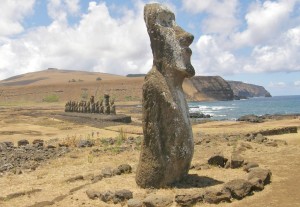
The mystery of the monuments of moai on Easter Island speaks to a key puzzle in the analysis of society and societal change. This mystery has to do with the way that cultural attitudes and beliefs have an ability to become rigid and inflexible, sometimes to the degree that they become independent of the material reality they are intended to interpret or give meaning to. Cultural beliefs can take on a life of their own whether they have relevance to the survival of a people or not. The idea of a dialectic of culture refers to the way in which the creation of culture — beliefs, practices, ways of life, technologies, and material artifacts, etc. — is both constrained by limits given by the environment and a means to go beyond these natural limits, to adapt and modify the environment to suit human purposes and needs. This dialectic provides a model for understanding how societies evolve and change, but it also reveals the precarious nature of the human/environment relationship.
The anthropologist Ronald Wright (2004) described this phenomenon with regard to the history of the indigenous people of Easter Island in the South Pacific. The archaeological record shows that Easter Island, or Rapa Nui, once had a lush, richly soiled, and densely treed ecosystem that sustained a population of approximately 10,000 people. However, by the time the Dutch arrived in the early 18th century, the ecosystem of the island was barren, and only 2,000 poorly nourished inhabitants were living there. At the same time, approximately 1,000 massive, 30-foot high monuments or “moai”, the height of 3 story buildings, were there — one for every 10 inhabitants at the height of the island’s population. The origins of the moai struck European observers as mysterious because the means of their construction had long vanished. Commentators as late as the 1970s claimed that these must have been the work of some vanished ancient civilization or even visitors from outer space (e.g., von Daniken, 1969).
However, as archeologists discovered, the monuments had been erected through concerted human labour to honour the ancestors of rival island clans when the islands were more populated and forested. As the rivalry between clans became more intense, around the time of the European Middle Ages, the stone images became increasingly extravagant. Each generation built larger and larger moai by using up valuable resources, especially timber. By 1400, the island was treeless. As Wright puts it, the compulsion of the statue cults to build more and larger moai to honour the ancestors was an “ideological pathology” (2004), a fixed cultural idea that so defied practical sense that it undermined the ability of a people to survive.
Wright makes the analogy between the statue cults of Easter Island and the contemporary “cult of progress” in which an increasing exploitation of resources and an accumulation of wealth are valued in themselves. As a modern version of ideological pathology, the cult of progress has no regard for social and environmental sustainability. He cites Bahn and Flenley:
[The islanders] carried out for us the experiment of permitting unrestricted population growth, profligate use of resources, destruction of the environment and boundless confidence in their religion to take care of the future. The result was an ecological disaster leading to a population crash. Do we have to repeat the experiment on a grand scale? Is the human personality always the same as that of the person who felled the last tree? (Wright, 2004, p. 63)
To understand this dynamic, it is important to attend to the dialectic of culture. Culture is the means that a society uses to make sense of the world. It responds to changes in the mode of production or economy of a society. As new types of production are created, the relationship to the world is modified, and new cultural understandings emerge. People begin to see the world in a different way because they are interacting with it in a different way. These understandings are of course influenced by the corresponding relations of power in society, which determine whose perspectives on the world become “truths” and whose do not.
In this dialectical model, it is important to point out that changes in the mode of production do not determine or cause cultural beliefs in some sort of mechanical relationship, just as the invention of the piano did not cause Mozart’s piano concertos to be written. As Marx puts it:
mankind always sets itself only such tasks as it can solve; since, looking at the matter more closely, it will always be found that the task itself arises only when the material conditions for its solution already exist or are at least in the process of formation” (1859/1977).
To this, we might add that the “tasks” or cultural possibilities set by the material conditions of a society can be taken up in many different ways, or not at all. On the other hand, as Wright’s examples show, cultural beliefs, practices, and tasks can become rigid and unresponsive to material reality, unhinged from the ability of the environment or the economy to sustain them. Therefore, it is appropriate to view culture as being in a fluid and dialectical relationship with the mode of production. One does not cause the other in a deterministic manner; rather, both provide the limits or parameters within which the other develops. If a culturally driven process exceeds the capacity of material reality to sustain it, the culture is in danger of no longer being viable.
Feudal Societies
In Europe, the 9th century gave rise to feudal societies. Feudal societies were still agriculturally based but organized according to a strict hierarchical system of power founded on land ownership, military protection, and duties or mutual obligations between the different classes. Feudalism is usually used in a restricted sense by historians to describe the societies of post-Roman Europe, from roughly the 9th to the 15th centuries (the “middle ages”), although these societies bare striking resemblance to the hierarchical, agricultural-based societies of Japan, China, and pre-contact America (e.g., Aztec, Inca) of the same period.
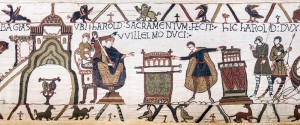
In Europe the class system of feudalism was organized around the parceling out of manors or estates by the aristocracy to vassals and knights in return for their military service. The nobility, known as lords, rewarded knights or vassals by granting them pieces of land. In return for the resources that the land provided, vassals promised to fight for their lords. These individual pieces of land, known as fiefdoms, were cultivated by the lower class of serfs. Serfs were not slaves, in that they were at least nominally free men and women, but they produced agricultural surpluses for lords primarily through forced agricultural service. In return for maintaining and working the land, serfs were guaranteed a place to live and military protection from outside enemies. They were able to produce food and goods for their own consumption on private land allotments, or on common allotments shared by the community. Power in feudal society was handed down through family lines, with serf families serving lords for generations and generations.
In later forms of feudalism, the forced labour of the serfs was gradually replaced by a system of rents and taxation. Serfs worked their own plots of land but gave their lords a portion of what they produced. Gradually payment in the form of goods and agricultural surplus was replaced by payment in the form of money. This prompted the development of markets in which the exchange of goods through bartering was replaced by the exchange of goods for money. This was the origin of the money economy. In bartering, the buyer and the seller have to need each other’s goods. In a market economy, goods are exchanged into a common medium of value — money — which can then be exchanged for goods of any nature. Markets therefore enabled goods and services to be bought and sold on a much larger scale and in a much more systematic and efficient way. Money also enabled land to be bought and sold instead of handed down through hereditary right. Money could be accumulated and financial debts could be incurred.
Ultimately, the social and economic system of feudalism was surpassed by the rise of capitalism and the technological advances of the industrial era, because money allowed economic transactions to be conceived and conducted in an entirely new way. In particular, the demise of feudalism was initiated by the increasing need to intensify labour and improve productivity as markets became more competitive and the economy less dependent on agriculture.
Industrial Societies

In the 18th century, Europe experienced a dramatic rise in technological invention, ushering in an era known as the Industrial Revolution. What made this period remarkable was the number of new inventions that influenced people’s daily lives. Within a generation, tasks that had until this point required months of labour became achievable in a matter of days. Before the Industrial Revolution, work was largely person- or animal-based, relying on human workers or horses to power mills and drive pumps. In 1782, James Watt and Matthew Boulton created a steam engine that could do the work of 12 horses by itself.
Steam power began appearing everywhere. Instead of paying artisans to painstakingly spin wool and weave it into cloth, people turned to textile mills that produced fabric quickly at a better price, and often with better quality. Rather than planting and harvesting fields by hand, farmers were able to purchase mechanical seeders and threshing machines that caused agricultural productivity to soar. Products such as paper and glass became available to the average person, and the quality and accessibility of education and health care soared. Gas lights allowed increased visibility in the dark, and towns and cities developed a nightlife.
One of the results of increased wealth, productivity, and technology was the rise of urban centres. Serfs and peasants, expelled from their ancestral lands, flocked to the cities in search of factory jobs, and the populations of cities became increasingly diverse. The new generation became less preoccupied with maintaining family land and traditions, and more focused on survival. Some were successful in acquiring wealth and achieving upward mobility for themselves and their family. Others lived in devastating poverty and squalor. Whereas the class system of feudalism had been rigid, and resources for all but the highest nobility and clergy were scarce, under capitalism social mobility (both upward and downward) became possible.
It was during the 18th and 19th centuries of the Industrial Revolution that sociology was born. Life was changing quickly and the long-established traditions of the agricultural eras did not apply to life in the larger cities. Masses of people were moving to new environments and often found themselves faced with horrendous conditions of filth, overcrowding, and poverty. Social science emerged in response to the unprecedented scale of the social problems of modern society.
It was during this time that power moved from the hands of the aristocracy and “old money” to the new class of rising bourgeoisie who were able to amass fortunes in their lifetimes. In Canada, a new cadre of financiers and industrialists like Donald Smith (1st Baron Strathcona and Mount Royal) and George Stephen (1st Baron Mount Stephen) became the new power players, using their influence in business to control aspects of government as well. Eventually, concerns over the exploitation of workers led to the formation of labour unions and laws that set mandatory conditions for employees. Although the introduction of new “postindustrial” technologies (like computers) at the end of the 20th century ended the industrial age, much of our social structure and social ideas — such as the nuclear family, left-right political divisions, and time standardization — have a basis in industrial society.
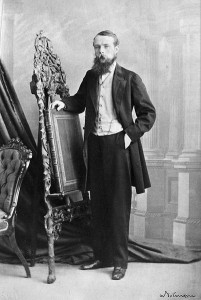
Postindustrial Societies

Information societies, sometimes known as postindustrial or digital societies, are a recent development. Unlike industrial societies that are rooted in the production of material goods, information societies are based on the production of information and services.
Digital technology is the steam engine of information societies, and high tech companies such as Apple, Microsoft and RIM are its version of railroad and steel manufacturing corporations. Since the economy of information societies is driven by knowledge and not material goods, power lies with those in charge of creating, storing, and distributing information. Members of a postindustrial society are likely to be employed as sellers of services — software programmers or business consultants, for example — instead of producers of goods. Social classes are divided by access to education, since without technical and communication skills, people in an information society lack the means for success.
Postnatural Society: The Anthropocene

Recent scientific and technological developments transform the relationship to nature to a such a degree that it is possible to talk about a new postnatural society. Advances in computing, genetics, nano-technology and quantum mechanics create the conditions for society in which the limits imposed by nature are overcome by technological interventions at the molecular level of life and matter. Donna Haraway (1991) describes the new “cyborg” reality that becomes possible when the capacities of the body and mind are enhanced by various prosthetic devices like artificial organs or body parts. When these artificial prosthetics do not simply replace defective anatomy but improve upon it, one can argue that the conditions of life have become postnatural. In his science fiction novel Holy Fire (1996), Bruce Sterling extrapolates from recent developments in medical knowledge to imagine a future epoch of posthumanity, i.e., a period in which the mortality that defined the human condition for millennia has effectively been eliminated through the technologies of life preservation.
Through genetic engineering, scientists have been able to create new life forms since the early 1970s. This research is fueled by the prospect of using genetic technologies to solve problems, like disease and aging, at the level of the DNA molecule that contains the “blueprint” of life. Food crops can be designed that are pest-resistant, drought-resistant or more productive. These technologies are therefore theoretically capable of solving environmentally imposed restrictions on our collective ability to feed the hungry. Similarly, nanotechnologies, which allow the physical properties of materials to be engineered at the atomic and subatomic level, pose the possibility of an infinitely manipulable universe. The futurologist Ray Kurzweil (2009) suggests that on the basis of nanotechnology “we’ll be able to create just about anything we need in the physical world from information files with very inexpensive input materials.” Others caution that the complexity of risks posed by the introduction of these molecular technologies into the environment makes their use decidedly dangerous and their consequences incalculable. This is a very postnatural dilemma; one that would not have occurred to people in earlier types of society.
What are the effects of postnatural technologies on the structure and forms of social life and society? At present, these technologies are extremely capital-intensive to develop, which suggests that they will have implications for social inequality — both within societies and globally. Wealthy nations and wealthy individuals will be the most likely beneficiaries. Moreover, as the development of postnatural technologies do not impact the basic structures of capitalism, for the forseeable future decisions on which avenues of research are to be pursued will be decided solely on the basis of profitable returns. Many competing questions concerning the global risks of the technologies and the ethics of their implementation are secondary to the profit motives of the corporations that own the knowledge.
In terms of the emergent life technologies like genetic engineering or micro-biochemical research, Nikolas Rose (2007) suggests that we are already experiencing five distinct lines of social transformation:
- The “molecularization” of our perspective on the human body, or life in general, implies that we now visualize the body and intervene in its processes at the molecular level. We are “no longer constrained by the normativity of a given order.” From growing skin in a petri dish to the repurposing of viruses, the body can be reconstructed in new, as yet unknown forms because of the pliability of life at the molecular level.
- The technologies shift our attention to the optimization of the body’s capacities rather than simply curing illness. It becomes possible to address our risk and susceptibility to future illnesses or aging processes, just as it becomes feasible to enhance the body’s existing capacities (e.g., strength, cognitive ability, beauty, etc.).
- The relationship between bodies and political life changes to create new forms of biological citizenship. We increasingly construct our identities according to the specific genetic markers that define us, (e.g., “we are the people with Leber’s Amaurosis”), and on this basis advocate for policy changes, accommodations, resources, and research funding, etc.
- The complexity of the knowledge in this field increasingly forces us to submit ourselves to the authority of the new somatic specialists and authorities, from neurologists to genetics counselors.
- As the flows of capital investment in biotechnology and biomedicine shift towards the creation of a new “bioeconomy,” the fundamental processes of life are turned into potential sources of profit and “biovalue.”
Some have described the postnatural period that we are currently living in as the Anthropocene. The anthropocene is defined as the geological epoch following the Pleistocene and Holocene in which human activities have significantly impacted the global ecosystem (Crutzen and Stoermer, 2000). Climate change is the primary example of anthropocenic effect, but it includes a number of other well-known examples from soil erosion and species extinction to the acidification of the oceans. Of course this impact began at least as early as the 19th century with the effects on the environment caused by the industrial revolution. Arguably, however, it is the recently established knowledge and scientific evidence of these effects which constitutes the current era as the anthropocene. In the anthropocene we become aware of the global nature of the catastrophic risks that human activities pose to the environment. It is also this knowledge that enables the possibility of institutional, economic, and political change to address these issues. Current developments like the use of cap and trade or carbon pricing to factor in the cost the environmental impact into economic calculations, the shift to “green” technologies like solar and wind power, or even curbside recycling have both global implications and direct repercussions for the organization of daily life.
4.2. Theoretical Perspectives on the Formation of Modern Society
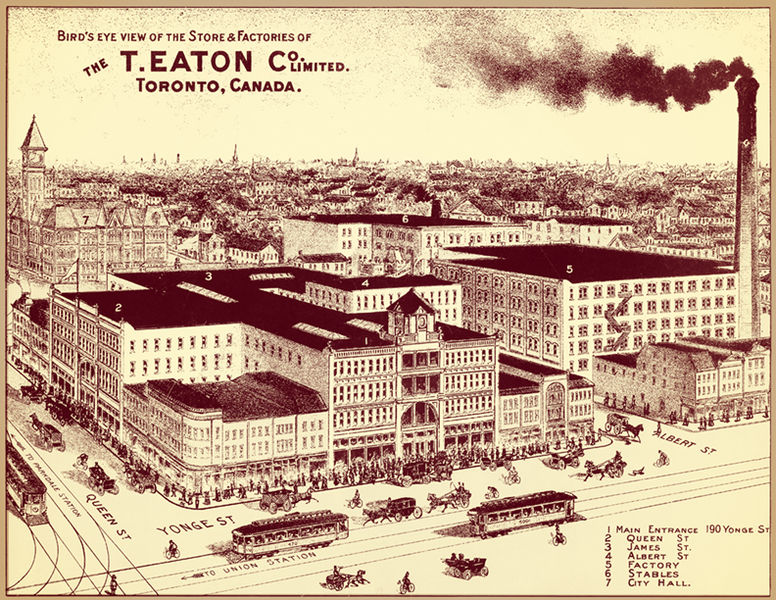
While many sociologists have contributed to research on society and social interaction, three thinkers provide the basis of modern-day perspectives. Émile Durkheim, Karl Marx, and Max Weber developed different theoretical approaches to help us understand the development of modern capitalist society. In Chapter 3, we discussed how the members of a society come to share common norms and values: a way of life or culture. In the following discussion of modern society, we examine Durkheim’s, Marx’s and Weber’s analytical focus on another foundational sociological concept: social structure.
As we saw in Chapter 1, social structures can be defined as general patterns of social behaviour and organization that persist through time. Here Durkheim’s analysis focuses on the impacts of the growing division of labour as a uniquely modern social structure, Marx’s on the economic structures of capitalism (private property, class, competition, crisis, etc.), and Weber’s on the rationalized structures of modern organization. While the aspect of modern structure that Durkheim, Marx and Weber emphasize differs, their common approach is to stress the impact of social structure on culture and ways of life rather than the other way around. This remains a key element of sociological explanation today.
Émile Durkheim and Functionalism
Émile Durkheim’s (1858-1917) key focus in studying modern society was to understand the conditions under which social and moral cohesion could be reestablished. He observed that European societies of the 19th century had undergone an unprecedented and fractious period of social change that threatened to dissolve society altogether. In his book The Division of Labour in Society (1893/1960), Durkheim argued that as modern societies grew more populated, more complex, and more difficult to regulate, the underlying basis of solidarity or unity within the social order needed to evolve. His primary concern was that the cultural glue that held society together was failing, and that the divisions between people were becoming more conflictual and unmanageable. Therefore Durkheim developed his school of sociology to explain the principles of cohesiveness of societies (i.e., their forms of social solidarity) and how they change and survive over time. He thereby addressed one of the fundamental sociological questions: why do societies hold together rather than fall apart?
Two central components of social solidarity in traditional, premodern societies were the common collective conscience — the communal beliefs, morals, and attitudes of a society shared by all — and high levels of social integration — the strength of ties that people have to their social groups. These societies were held together because most people performed similar tasks and shared values, language, and symbols. There was a low division of labour, a common religious system of social beliefs, and a low degree of individual autonomy. Society was held together on the basis of mechanical solidarity: a minimal division of labour and a shared collective consciousness with harsh punishment for deviation from the norms. Such societies permitted a low degree of individual autonomy. Essentially there was no distinction between the individual conscience and the collective conscience.
Societies with mechanical solidarity act in a mechanical fashion; things are done mostly because they have always been done that way. If anyone violated the collective conscience embodied in laws and taboos, punishment was swift and retributive. This type of thinking was common in preindustrial societies where strong bonds of kinship and a low division of labour created shared morals and values among people, such as among the feudal serfs. When people tend to do the same type of work, Durkheim argued, they tend to think and act alike.
Modern societies, according to Durkheim, were more complex. Collective consciousness was increasingly weak in individuals and the ties of social integration that bound them to others were increasingly few. Modern societies were characterized by an increasing diversity of experience and an increasing division of people into different occupations and specializations. They shared less and less commonalities that could bind them together. However, as Durkheim observed, their ability to carry out their specific functions depended upon others being able to carry out theirs. Modern society was increasingly held together on the basis of a division of labour or organic solidarity: a complex system of interrelated parts, working together to maintain stability, i.e., like an organism (Durkheim, 1893/1960).
According to his theory, as the roles individuals in the division of labour become more specialized and unique, and people increasingly have less in common with one another, they also become increasingly interdependent on one another. Even though there is an increased level of individual autonomy — the development of unique personalities and the opportunity to pursue individualized interests — society has a tendency to cohere because everyone depends on everyone else. The academic relies on the mechanic for the specialized skills required to fix his or her car, the mechanic sends his or her children to university to learn from the academic, and both rely on the baker to provide them with bread for their morning toast. Each member of society relies on the others. In premodern societies, the structures like religious practice that produce shared consciousness and harsh retribution for transgressions function to maintain the solidarity of society as a whole; whereas in modern societies, the occupational structure and its complex division of labour function to maintain solidarity through the creation of mutual interdependence.
While the transition from mechanical to organic solidarity is, in the long run, advantageous for a society, Durkheim noted that it creates periods of chaos and “normlessness.” One of the outcomes of the transition is social anomie. Anomie — literally, “without norms” — is a situation in which society no longer has the support of a firm collective consciousness. There are no clear norms or values to guide and regulate behaviour. Anomie was associated with the rise of industrial society, which removed ties to the land and shared labour; the rise of individualism, which removed limits on what individuals could desire; and the rise of secularism, which removed ritual or symbolic foci and traditional modes of moral regulation. During times of war or rapid economic development, the normative basis of society was also challenged. People isolated in their specialized tasks tend to become alienated from one another and from a sense of collective conscience. However, Durkheim felt that as societies reach an advanced stage of organic solidarity, they avoid anomie by redeveloping a set of shared norms. According to Durkheim, once a society achieves organic solidarity, it has finished its development.
Karl Marx and Critical Sociology
For Marx, the creation of modern society was tied to the emergence of capitalism as a global economic system. In the mid-19th century, as industrialization was expanding, Karl Marx (1818–1883) observed that the conditions of labour became more and more exploitative. The large manufacturers of steel were particularly ruthless, and their facilities became popularly dubbed “satanic mills” based on a poem by William Blake. Marx’s colleague and friend, Frederick Engels, wrote The Condition of the Working-Class in England in 1844, which described in detail the horrid conditions.
Such is the Old Town of Manchester, and on re-reading my description, I am forced to admit that instead of being exaggerated, it is far from black enough to convey a true impression of the filth, ruin, and uninhabitableness, the defiance of all considerations of cleanliness, ventilation, and health which characterise the construction of this single district, containing at least twenty to thirty thousand inhabitants. And such a district exists in the heart of the second city of England, the first manufacturing city of the world (1812).
Add to that the long hours, the use of child labour, and exposure to extreme conditions of heat, cold, and toxic chemicals, and it is no wonder that Marx referred to capital as “dead labour, that, vampire-like, only lives by sucking living labour, and lives the more, the more labour it sucks” (Marx, 1867/1995).
As we saw at the beginning of the chapter, Marx’s explanation of the exploitative nature of industrial society draws on a more comprehensive theory of the development of human societies from the earliest hunter-gatherers to the modern era: historical materialism. For Marx, the underlying structure of societies and of the forces of historical change was predicated on the relationship between the “base and superstructure” of societies. In this model, society’s economic structure forms its base, on which the culture and other social institutions rest, forming its superstructure. For Marx, it is the base—the economic mode of production—that determines what a society’s culture, law, political system, family form, and, most importantly, its typical form of struggle or conflict will be like. Each type of society—hunter-gatherer, pastoral, agrarian, feudal, capitalist—could be characterized as the total way of life that forms around different economic bases.
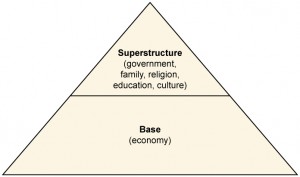
Marx saw economic conflict in society as the primary means of change. The base of each type of society in history — its economic mode of production — had its own characteristic form of economic struggle. This was because a mode of production is essentially two things: the means of production of a society — anything that is used in production to satisfy needs and maintain existence (e.g., land, animals, tools, machinery, factories, etc.) — and the relations of production of a society — the division of society into economic classes (the social roles allotted to individuals in production). Marx observed historically that in each epoch or type of society since the early “primitive communist” foraging societies, only one class of persons has owned or monopolized the means of production. Different epochs are characterized by different forms of ownership and different class structures: hunter-gatherer (classless/common ownership), agricultural (citizens/slaves), feudal (lords/peasants), and capitalism (capitalists/“free” labourers). As a result, the relations of production have been characterized by relations of domination since the emergence of private property in the early Agrarian societies. Throughout history, societies have been divided into classes with opposed or contradictory interests. These “class antagonisms,” as he called them, periodically lead to periods of social revolution in which it becomes possible for one type of society to replace another.
The most recent revolutionary transformation resulted in the end of feudalism. A new revolutionary class emerged from among the freemen, small property owners, and middle-class burghers of the medieval period to challenge and overthrow the privilege and power of the feudal aristocracy. The members of the bourgeoisie or capitalist class were revolutionary in the sense that they represented a radical change and redistribution of power in European society. Their power was based in the private ownership of industrial property, which they sought to protect through the struggle for property rights, notably in the English Civil War (1642–1651) and the French Revolution (1789–1799). The development of capitalism inaugurated a period of world transformation and incessant change through the destruction of the previous class structure, the ruthless competition for markets, the introduction of new technologies, and the globalization of economic activity.
As Marx and Engels put it in The Communist Manifesto:
The bourgeoisie, wherever it has got the upper hand, has put an end to all feudal, patriarchal, idyllic relations. It has pitilessly torn asunder the motley feudal ties that bound man to his “natural superiors”, and has left remaining no other nexus between man and man than naked self-interest, than callous “cash payment.” It has drowned the most heavenly ecstasies of religious fervour, of chivalrous enthusiasm, of philistine sentimentalism, in the icy water of egotistical calculation…. The bourgeoisie cannot exist without constantly revolutionising the instruments of production, and thereby the relations of production, and with them the whole relations of society (1848/1977).
However, the rise of the bourgeoisie and the development of capitalism also brought into existence the class of “free” wage labourers, or the proletariat. The proletariat were made up largely of guild workers and serfs who were freed or expelled from their indentured labour in feudal guild and agricultural production and migrated to the emerging cities where industrial production was centred. They were “free” labour in the sense that they were no longer bound to feudal lords or guildmasters. The new labour relationship was based on a contract. However, as Marx pointed out, this meant in effect that workers could sell their labour as a commodity to whomever they wanted, but if they did not sell their labour they would starve. The capitalist had no obligations to provide them with security, livelihood, or a place to live as the feudal lords had done for their serfs. The source of a new class antagonism developed based on the contradiction of fundamental interests between the bourgeois owners and the wage labourers: where the owners sought to reduce the wages of labourers as far as possible to reduce the costs of production and remain competitive, the workers sought to retain a living wage that could provide for a family and secure living conditions. The outcome, in Marx and Engel’s words, was that “society as a whole is more and more splitting up into two great hostile camps, into two great classes directly facing each other — Bourgeoisie and Proletariat” (1848/1977).
Making Connections: Sociological Concepts
Marx and the Theory of Alienation

For Marx, what we do defines who we are. What it is to be “human” is defined by the capacity we have as a species to creatively transform the world in which we live to meet our needs for survival. Humanity at its core is Homo faber (“Man the Creator”). In historical terms, in spite of the persistent nature of one class dominating another, the element of humanity as creator existed. There was at least some connection between the worker and the product, augmented by the natural conditions of seasons and the rising and setting of the sun, such as we see in an agricultural society. But with the bourgeois revolution and the rise of industry and capitalism, workers now worked for wages alone. The essential elements of creativity and self-affirmation in the free disposition of their labour was replaced by compulsion. The relationship of workers to their efforts was no longer of a human nature, but based purely on animal needs. As Marx put it, the worker “only feels himself freely active in his animal functions of eating, drinking, and procreating, at most also in his dwelling and dress, and feels himself an animal in his human functions” (1932/1977).
Marx described the economic conditions of production under capitalism in terms of alienation. Alienation refers to the condition in which the individual is isolated and divorced from his or her society, work, or the sense of self and common humanity. Marx defined four specific types of alienation that arose with the development of wage labour under capitalism.
Alienation from the product of one’s labour. An industrial worker does not have the opportunity to relate to the product he or she is labouring on. The worker produces commodities, but at the end of the day the commodities not only belong to the capitalist, but serve to enrich the capitalist at the worker’s expense. In Marx’s language, the worker relates to the product of his or her labour “as an alien object that has power over him [or her]” (1932/1977). Workers do not care if they are making watches or cars; they care only that their jobs exist. In the same way, workers may not even know or care what products they are contributing to. A worker on a Ford assembly line may spend all day installing windows on car doors without ever seeing the rest of the car. A cannery worker can spend a lifetime cleaning fish without ever knowing what product they are used for.
Alienation from the process of one’s labour. Workers do not control the conditions of their jobs because they do not own the means of production. If someone is hired to work in a fast food restaurant, that person is expected to make the food exactly the way they are taught. All ingredients must be combined in a particular order and in a particular quantity; there is no room for creativity or change. An employee at Burger King cannot decide to change the spices used on the fries in the same way that an employee on a Ford assembly line cannot decide to place a car’s headlights in a different position. Everything is decided by the owners who then dictate orders to the workers. The workers relate to their own labour as an activity that does not belong to them.
Alienation from others. Workers compete, rather than cooperate. Employees vie for time slots, bonuses, and job security. Different industries and different geographical regions compete for investment. Even when a worker clocks out at night and goes home, the competition does not end. As Marx commented in The Communist Manifesto, “No sooner is the exploitation of the labourer by the manufacturer, so far at an end, that he receives his wages in cash, than he is set upon by the other portion of the bourgeoisie, the landlord, the shopkeeper, the pawnbroker” (1848/1977).
Alienation from one’s humanity. A final outcome of industrialization is a loss of connectivity between a worker and what makes them truly human. Humanity is defined for Marx by “conscious life-activity,” but under conditions of wage labour this is taken not as an end in itself — only a means of satisfying the most base, animal-like needs. The “species being” (i.e., conscious activity) is only confirmed when individuals can create and produce freely, not simply when they work to reproduce their existence and satisfy immediate needs like animals.
Taken as a whole, then, alienation in modern society means that individuals have no control over their lives. There is nothing that ties workers to their occupations. Instead of being able to take pride in an identity such as being a watchmaker, automobile builder, or chef, a person is simply a cog in the machine. Even in feudal societies, people controlled the manner of their labour as to when and how it was carried out. But why, then, does the modern working class not rise up and rebel?
In response to this problem, Marx developed the concept of false consciousness. False consciousness is a condition in which the beliefs, ideals, or ideology of a person are not in the person’s own best interest. In fact, it is the ideology of the dominant class (here, the bourgeoisie capitalists) that is imposed upon the proletariat. Ideas such as the emphasis of competition over cooperation, of hard work being its own reward, of individuals as being the isolated masters of their own fortunes and ruins, etc. clearly benefit the owners of industry. Therefore, to the degree that workers live in a state of false consciousness, they are less likely to question their place in society and assume individual responsibility for existing conditions.
Like other elements of the superstructure, “consciousness,” is a product of the underlying economic; Marx proposed that the workers’ false consciousness would eventually be replaced with class consciousness — the awareness of their actual material and political interests as members of a unified class. In The Communist Manifesto, Marx and Engels wrote,
The weapons with which the bourgeoisie felled feudalism to the ground are now turned against the bourgeoisie itself. But not only has the bourgeoisie forged the weapons that bring death to itself; it has also called into existence the men who are to wield those weapons — the modern working class — the proletarians (1848/1977).
Capitalism developed the industrial means by which the problems of economic scarcity could be resolved and, at the same time, intensified the conditions of exploitation due to competition for markets and profits. Thus emerged the conditions for a successful working class revolution. Instead of existing as an unconscious “class in itself,” the proletariat would become a “class for itself” and act collectively to produce social change (Marx and Engels, 1848/1977). Instead of just being an inert strata of society, the class could become an advocate for social improvements. Only once society entered this state of political consciousness would it be ready for a social revolution. Indeed, Marx predicted that this would be the ultimate outcome and collapse of capitalism.
To summarise, for Marx, the development of capitalism in the 18th and 19th centuries was utterly revolutionary and unprecedented in the scope and scale of the societal transformation it brought about. In his analysis, capitalism is defined by a unique set of features that distinguish it from previous modes of production like feudalism or agrarianism:
- The means of production (i.e., productive property or capital) are privately owned and controlled.
- Capitalists purchase labour power from workers for a wage or salary.
- The goal of production is to profit from selling commodities in a competitive-free market.
- Profit from the sale of commodities is appropriated by the owners of capital. Part of this profit is reinvested as capital in the business enterprise to expand its profitability.
- The competitive accumulation of capital and profit leads to capitalism’s dynamic qualities: constant expansion of markets, globalization of investment, growth and centralization of capital, boom and bust cycles, economic crises, class conflict, etc.
These features are structural, meaning that they are built-into, and reinforced by, the institutional organization of the economy. They are structures, or persistent patterns of social relationship that exist, in a sense, prior to individuals’ personal or voluntary choices and motives. As structures, they can be said to define the rules or internal logic that underlie the surface or observable characteristics of a capitalist society: its political, social, economic, and ideological formations. Some isolated cases may exist where some of these features do not apply, but they define the overall system that has come to govern the contemporary global economy.
Marx’s analysis of the transition from feudalism to capitalism is historical and materialist because it focuses on the changes in the economic mode of production to explain the transformation of the social order. The expansion of the use of money, the development of commodity markets, the introduction of rents, the accumulation and investment of capital, the creation of new technologies of production, and the early stages of the manufactory system, etc. led to the formation of a new class structure (the bourgeoisie and the proletariat), a new political structure (the nation state), and a new ideological structure (science, human rights, individualism, rationalization, the belief in progress, etc.). The unprecedented transformations that created the modern era — urbanization, colonization, population growth, resource exploitation, social and geographical mobility, etc. — originated in the transformation of the mode of production from feudalism to capitalism. “Only the capitalist production of commodities revolutionizes … the entire economic structure of society in a manner eclipsing all previous epochs” (Marx, 1878). In the space of a couple of hundred years, human life on the planet was irremediably and radically altered. As Marx and Engels put it, capitalism had “create[d] a world after its own image” (1848/1977 ).
Max Weber and Interpretive Sociology
Like the other social thinkers discussed here, Max Weber (1864–1920) was concerned with the important changes taking place in Western society with the advent of capitalism. Arguably, the primary focus of Weber’s entire sociological oeuvre was to determine how and why Western civilization and capitalism developed, and where and when they developed. Why was the West the West? Why did the capitalist system develop in Europe and not elsewhere? Like Marx and Durkheim, he feared that capitalist industrialization would have negative effects on individuals but his analysis differed from theirs in significant respects. Key to the answer to his questions was the concept of rationalization. If other societies had failed to develop modern capitalist enterprise, modern science, and modern, efficient organizational structures, it was because in various ways they had impeded the development of rationalization. Weber’s question was: what are the consequences of rationality for everyday life, for the social order, and for the spiritual fate of humanity?
Unlike Durkheim’s functionalist emphasis on the sources of social solidarity and Marx’s critical emphasis on the materialist basis of class conflict, Weber’s interpretive perspective on modern society emphasizes the development of a rationalized worldview or stance, which he referred to as the disenchantment of the world: “principally there are no mysterious incalculable forces that come into play, but rather one can, in principle, master all things by calculation” (1919/1969). In other words, the processes of rationalization and disenchantment refer principally to the mode in which modern individuals and institutions interpret or analyze the world and the problems that confront them. As we saw in Chapter 3, rationalization refers to the general tendency in modern society for all institutions and most areas of life to be transformed by the application of rational principles of efficiency and calculation. It overcomes forms of magical thinking and replaces them with cold, objective calculations based on principles of technical efficiency. Older styles of social organization, based on traditional principles of religion, morality, or custom, cannot compete with the efficiency of rational styles of organization and are gradually replaced.
To Weber, capitalism itself became possible through the processes of rationalization. The emergence of capitalism in the West required the prior existence of rational, calculable procedures like double-entry bookkeeping, free labour contracts, free market exchange, and predictable application of law so that it could operate as a form of rational enterprise. Unlike Marx who defined capitalism in terms of the ownership of private property, Weber defined it in terms of its rational processes. For Weber, capitalism is as a form of continuous, calculated economic action in which every element is examined with respect to the logic of investment and return. As opposed to previous types of economic action in which wealth was acquired by force and spent on luxuries, capitalism rested “on the expectation of profit by the utilization of opportunities for exchange, that is, on (formally) peaceful chances for profit.” This implied a continual rationalization of commercial procedures in terms of the logic of capital accumulation. “Where capitalist acquisition is rationally pursued, the corresponding action is adjusted to calculations in terms of capital” (Weber, 1904/1958).
Weber’s analysis of rationalization did not exclusively focus on the conditions for the rise of capitalism however. Capitalism’s “rational” reorganization of economic activity was only one aspect of the broader process of rationalization and disenchantment. Modern science, law, music, art, bureaucracy, politics, and even spiritual life could only have become possible, according to Weber, through the systematic development of precise calculations and planning, technical procedures, and the dominance of “quantitative reckoning.” He felt that other non-Western societies, however highly sophisticated, had impeded these developments by either missing some crucial element of rationality or by holding to non-rational organizational principles or some element of magical thinking. For example, Babylonian astronomy lacked mathematical foundations, Indian geometry lacked rational proofs, Mandarin bureaucracy remained tied to Confucian traditionalism and the Indian caste system lacked the common “brotherhood” necessary for modern citizenship.
Weber argued however that although the process of rationalization leads to efficiency and effective, calculated decision making, it is in the end an irrational system. The emphasis on rationality and efficiency ultimately has negative effects when taken to its conclusion. In modern societies, this is seen when rigid routines and strict adherence to performance-related goals lead to a mechanized work environment and a focus on efficiency for its own sake. To the degree that rational efficiency begins to undermine the substantial human values it was designed to serve (i.e., the ideals of the good life, ethical values, the integrity of human relationships, the enjoyment of beauty and relaxation) rationalization becomes irrational.

An example of the extreme conditions of rationality can be found in Charlie Chaplin’s classic film Modern Times (1936). Chaplin’s character works on an assembly line twisting bolts into place over and over again. The work is paced by the unceasing rotation of the conveyor belt and the technical efficiency of the division of labour. When he has to stop to swat a fly on his nose all the tasks down the line from him are thrown into disarray. He performs his routine task to the point where he cannot stop his jerking motions even after the whistle blows for lunch. Indeed, today we even have a recognized medical condition that results from such tasks, known as “repetitive stress syndrome.”
For Weber, the culmination of industrialization and rationalization results in what he referred to as the iron cage, in which the individual is trapped by the systems of efficiency that were designed to enhance the well-being of humanity. We are trapped in a cage, or literally a “steel housing”(stahlhartes Gehäuse), of efficiently organized processes because rational forms of organization have become indispensable. We must continuously hurry and be efficient because there is no time to “waste.” Weber argued that even if there was a social revolution of the type that Marx envisioned, the bureaucratic and rational organizational structures would remain. There appears to be no alternative. The modern economic order “is now bound to the technical and economic conditions of machine production which today determine the lives of all individuals who are born into this mechanism, not only those directly concerned with economic acquisition, with irresistible force” (Weber, 1904/1958).

Making Connections: Sociological Concepts
Max Weber and the Protestant Work Ethic
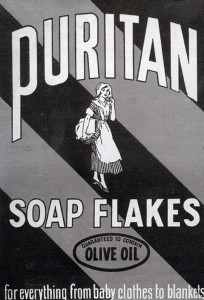
If Marx’s analysis is central to the sociological understanding of the structures that emerged with the rise of capitalism, Max Weber is a central figure in the sociological understanding of the effects of capitalism on modern subjectivity: how our basic sense of who we are and what we might aspire to has been defined by the culture and belief system of capitalism. The key work here is Weber’s Protestant Ethic and the Spirit of Capitalism (1905/1958) in which he lays out the characteristics of the modern ethos of work. Why do we feel compelled to work so hard?
An ethic or ethos refers to a way of life or a way of conducting oneself in life. For Weber, the Protestant work ethic was at the core of the modern ethos. It prescribes a mode of self-conduct in which discipline, work, accumulation of wealth, self-restraint, postponement of enjoyment, and sobriety are the focus of an individual life.
In Weber’s analysis, the ethic was indebted to the religious beliefs and practices of certain Protestant sects like the Lutherans, Calvinists, and Baptists who emerged with the Protestant Reformation (1517–1648). The Protestant theologian Richard Baxter proclaimed that the individual was “called” to their occupation by God, and therefore, they had a duty to “work hard in their calling.” “He who will not work shall not eat” (Baxter, as cited in Weber, 1958). This ethic subsequently worked its way into many of the famous dictums popularized by the American Benjamin Franklin, like “time is money” and “a penny saved is two pence dear” (i.e., “a penny saved is a penny earned”).
In Weber’s estimation, the Protestant ethic was fundamentally important to the emergence of capitalism, and a basic answer to the question of how and why it could emerge. Throughout the period of feudalism and the domination of the Catholic Church, an ethic of poverty and non-materialist values was central to the subjectivity and worldview of the Christian population. From the earliest desert monks and followers of St. Anthony to the great Vatican orders of the Franciscans and Dominicans, the image of Jesus was of a son of God who renounced wealth, possessions, and the material world. “It is easier for a camel to go through the eye of a needle, than for a rich man to enter into the kingdom of God” (Mark 10:25). We are of course well aware of the hypocrisy with which these beliefs were often practiced, but even in these cases, wealth was regarded in a different manner prior to the modern era. One worked only as much as was required. As Thomas Aquinas put it “labour [is] only necessary … for the maintenance of individual and community. Where this end is achieved, the precept ceases to have any meaning” (Aquinas, as cited in Weber, 1958). Wealth was not “put to work” in the form of a gradual return on investments as it is under capitalism. How was this medieval belief system reversed? How did capitalism become possible?
The key for Weber was the Protestant sects’ doctrines of predestination, the idea of the personal calling, and the individual’s direct, unmediated relationship to God. In the practice of the Protestant sects, no intermediary or priest interpreted God’s will or granted absolution. God’s will was essentially unknown. The individual could only be recognized as one of the predestined “elect” — one of the saved — through outward signs of grace: through the continuous display of moral self-discipline and, significantly, through the accumulation of earthly rewards that tangibly demonstrated God’s favour. In the absence of any way to know with certainty whether one was destined for salvation, the accumulation of wealth and material success became a sign of spiritual grace rather than a sign of sinful, earthly concerns. For the individual, material success assuaged the existential anxiety concerning the salvation of his or her soul. For the community, material success conferred status.
Weber argues that gradually the practice of working hard in one’s calling lost its religious focus, and the ethic of “sober bourgeois capitalism” (Weber, 1905/1958) became grounded in discipline alone: work and self-improvement for their own sake. This discipline of course produces the rational, predictable, and industrious personality type ideally suited for the capitalist economy. For Weber, the consequence of this, however, is that the modern individual feels compelled to work hard and to live a highly methodical, efficient, and disciplined life to demonstrate their self-worth to themselves as much as anyone. The original goal of all this activity — namely religious salvation — no longer exists. It is a highly rational conduct of life in terms of how one lives, but is simultaneously irrational in terms of why one lives. Weber calls this conundrum of modernity the iron cage. Life in modern society is ordered on the basis of efficiency, rationality, and predictability, and other inefficient or traditional modes of organization are eliminated. Once we are locked into the “technical and economic conditions of machine production” it is difficult to get out or to imagine another way of living, despite the fact that one is renouncing all of the qualities that make life worth living: spending time with friends and family, enjoying the pleasures of sensual and aesthetic life, and/or finding a deeper meaning or purpose of existence. We might be obliged to stay in this iron cage “until the last ton of fossilized coal is burnt” (Weber, 1905/1958).
Her-story: The History of Gender Inequality
Missing in the classical theoretical accounts of modernity is an explanation of how the developments of modern society, industrialization, and capitalism have affected women differently from men. Despite the differences in Durkheim’s, Marx’s, and Weber’s main themes of analysis, they are equally androcentric to the degree that they cannot account for why women’s experience of modern society is structured differently from men’s, or why the implications of modernity are different for women than they are for men. They tell his-story but neglect her-story.
Recall from Chapter 3: Androcentricism is a perspective in which male concerns, male attitudes, and male practices are presented as “normal” or define what is significant and valued in a culture. Women’s experiences, activities, and contributions to society and history are ignored, devalued, or marginalized.
For most of human history, men and women held more or less equal status in society. In hunter-gatherer societies gender inequality was minimal as these societies did not sustain institutionalized power differences. They were based on cooperation, sharing, and mutual support. There was often a gendered division of labour in that men are most frequently the hunters and women the gatherers and child care providers (although this division is not necessarily strict), but as women’s gathering accounted for up to 80% of the food, their economic power in the society was assured. Where headmen lead tribal life, their leadership is informal, based on influence rather than institutional power (Endicott, 1999). In prehistoric Europe from 7000 to 3500 BCE, archaeological evidence indicates that religious life was in fact focused on female deities and fertility, while family kinship was traced through matrilineal (female) descent (Lerner, 1986).
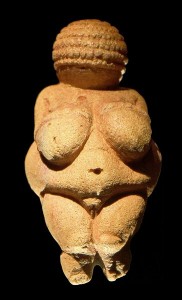
It was not until about 6,000 years ago that gender inequality emerged. With the transition to early agrarian and pastoral types of societies, food surpluses created the conditions for class divisions and power structures to develop. Property and resources passed from collective ownership to family ownership with a corresponding shift in the development of the monogamous, patriarchal (rule by the father) family structure. Women and children also became the property of the patriarch of the family. The invasions of old Europe by the Semites to the south, and the Kurgans to the northeast, led to the imposition of male-dominated hierarchical social structures and the worship of male warrior gods. As agricultural societies developed, so did the practice of slavery. Lerner (1986) argues that the first slaves were women and children.
The development of modern, industrial society has been a two-edged sword in terms of the status of women in society. Marx’s collaborator Friedrich Engels (1820–1895) argued in The Origin of the Family, Private Property, and the State (1884/1972) that the historical development of the male-dominated monogamous family originated with the development of private property. The family became the means through which property was inherited through the male line. This also led to the separation of a private domestic sphere and a public social sphere. “Household management lost its public character. It no longer concerned society. It became a private service; the wife became the head servant, excluded from all participation in social production” (1884/1972). Under the system of capitalist wage labour, women were doubly exploited. When they worked outside the home as wage labourers they were exploited in the workplace, often as cheaper labour than men. When they worked within the home, they were exploited as the unpaid source of labour needed to reproduce the capitalist workforce. The role of the proletarian housewife was tantamount to “open or concealed domestic slavery” as she had no independent source of income herself (Engels, 1884/1972). Early Canadian law, for example, was based on the idea that the wife’s labour belonged to the husband. This was the case even up to the famous divorce case of Irene Murdoch in 1973, who had worked the family farm in the Turner Valley, Alberta, side by side with her husband for 25 years. When she claimed 50% of the farm assets in the divorce, the judge ruled that the farm belonged to her husband, and she was awarded only $200 a month for a lifetime of work (CBC, 2001).
On the other hand, feminists note that gender inequality was more pronounced and permanent in the feudal and agrarian societies that proceeded capitalism. Women were more or less owned as property, and were kept ignorant and isolated within the domestic sphere. These conditions still exist in the world today. The World Economic Forum Global Gender Gap Report (2014) shows that in a significant number of countries women are severely restricted with respect to economic participation, educational attainment, political empowerment, and basic health outcomes. Yemen, Pakistan, Chad, Syria, and Mali were the five worst countries in the world in terms of women’s inequality.
Yemen is the world’s worst country for women in 2014, according to the WEF. In addition to being one of the worst countries in women’s economic participation and opportunity, Yemen received some of the world’s worst scores in relative educational attainment and political participation for females. Just half of women in the country could read, versus 83% of men. Further, women accounted for just 9% of ministerial positions and for none of the positions in parliament. Child marriage is a huge problem in Yemen. According to Human Rights Watch, as of 2006, 52% of Yemeni girls were married before they reached 18, and 14% were married before they reached 15 years of age (Hess, 2014).
With the rise of capitalism, Engels noted that there was also an improvement in women’s condition when they began to work outside the home. Writers like Mary Wollstonecraft (1759–1797) in her Vindication of the Rights of Women (1792/1997) were also able to see, in the discourses of rights and freedoms of the bourgeois revolutions and the Enlightenment, a general “promise” of universal emancipation that could be extended to include the rights of women. The focus of the Vindication of the Rights of Women was on the right of women to have an education, which would put them on the same footing as men with regard to the knowledge and rationality required for “enlightened” political participation and skilled work outside the home. Whereas property rights, the role of wage labour, and the law of modern society continued to be a source for gender inequality, the principles of universal rights became a powerful resource for women to use in order to press their claims for equality.
As the World Economic Forum (2014) study reports, “good progress has been made over the last years on gender equality, and in some cases, in a relatively short time.” Between 2006 and 2014, the gender gap in the measures of economic participation, education, political power, and health narrowed for 95% of the 111 countries surveyed. In the top five countries in the world for women’s equality — Iceland, Finland, Norway, Sweden, and Denmark — the global gender gap index had closed to 80% or better. (Canada was 19th with a global gender gap index of 75%).
4.3. Living in Capitalist Society
One of the key arguments that sociologists draw from Marx’s analysis is to show that capitalism is not simply an economic system but a social system. The dynamics of capitalism are not a set of obscure economic concerns to be relegated to the business section of the newspaper, but the architecture that underlies the newspaper’s front page headlines; in fact, every headline in the paper. At the time when Marx was developing his analysis, capitalism was still a relatively new economic system, an economic system characterized by private or corporate ownership of goods and the means to produce them. It was also a system that was inherently unstable and prone to crisis, yet increasingly global in its reach. Today capitalism has left no place on earth and no aspect of daily life untouched.
As a social system, one of the main characteristics of capitalism is incessant change, which is why the culture of capitalism is often referred to as modernity. The cultural life of capitalist society can be described as a series of successive “presents,” each of which defines what is modern, new, or fashionable for a brief time before fading away into obscurity like the 78 rpm record, the 8-track tape, and the CD. As Marx and Engels put it, “Constant revolutionizing of production, uninterrupted disturbance of all social conditions, everlasting uncertainty, and agitation distinguish the bourgeois epoch from all earlier ones. All fast-frozen relations … are swept away, all new ones become antiquated before they can ossify. All that is solid melts into air…” (1848/1977, p. 224). From the ghost towns that dot the Canadian landscape to the expectation of having a lifetime career, every element of social life under capitalism has a limited duration.
Key Terms
alienation: The condition in which an individual is isolated from his or her society, work, sense of self and/or common humanity.
anomie: A situation of uncertain norms and regulations in which society no longer has the support of a firm collective consciousness.
anthropocene: The geological epoch defined by the impact of human activitieson the global ecosystem.
bourgeoisie: The owners of the means of production in a society.
class consciousness: Awareness of one’s class position and interests.
collective conscience: The communal beliefs, morals, and attitudes of a society.
dialectic of culture: The way in which the creation of culture is both constrained by limits given by the environment and a means to go beyond these natural limits.
disenchantment of the world: The replacement of magical thinking by technological rationality and calculation.
ethos: A way of life or a way of conducting oneself in life.
false consciousness: When a person’s beliefs and ideology are in conflict with his or her best interests.
feudal societies: Agricultural societies that operate on a strict hierarchical system of power based around land ownership, protection and mutual obligations.
horticultural societies: Societies based around the cultivation of plants.
hunter-gatherer societies: Societies that depend on hunting wild animals and gathering uncultivated plants for survival.
industrial societies: Societies characterized by a reliance on mechanized labour to create material goods.
information societies: Societies based on the production of nonmaterial goods and services.
iron cage: A situation in which an individual is trapped by the rational and efficient processes of social institutions.
law of three stages: The three stages of evolution that societies develop through: theological, metaphysical, and positive.
mechanical solidarity: Social solidarity or cohesion through a shared collective consciousness with harsh punishment for deviation from the norms.
metaphysical stage: A stage of social evolution in which people explain events in terms of abstract or speculative ideas.
neolithic revolution: The economic transition to sedentary, agriculture based societies beginning approximately 10,200 years.
organic solidarity: Social solidarity or cohesion through a complex division of labour, mutual interdependence and restitutive law.
pastoral societies: Societies based around the domestication of animals.
proletariat: The wage labourers in capitalist society.
Protestant work ethic: The duty to work hard in one’s calling.
rationalization: The general tendency in modern society for all institutions and most areas of life to be transformed by the application of rationality and efficiency.
social class: A group defined by a distinct relationship to the means of production.
social integration: How strongly a person is connected to his or her social group.
social structure: General patterns of social behaviour and organization that persist through time.
theological stage: A stage of social evolution in which people explain events with respect to the will of God or gods.
Section Summary
4.1. Types of Societies
Societies are classified according to their development and use of technology. For most of human history, people lived in preindustrial societies characterized by limited technology and low production of goods. After the Industrial Revolution, many societies based their economies around mechanized labour, leading to greater profits and a trend toward greater social mobility. At the turn of the new millennium, a new type of society emerged. This postindustrial, or information, society is built on digital technology and nonmaterial goods.
4.2. Theoretical Perspectives on the Formation of Modern Society
Émile Durkheim believed that as societies advance, they make the transition from mechanical to organic solidarity. For Karl Marx, society exists in terms of class conflict. With the rise of capitalism, workers become alienated from themselves and others in society. Sociologist Max Weber noted that the rationalization of society can be taken to unhealthy extremes. Feminists note that the androcentric point of view of the classical theorists does not provide an adequate account of the difference in the way the genders experience modern society.
Section Quiz
4.1. Types of Societies
1. Which of the following fictional societies is an example of a pastoral society?
- The Deswan people, who live in small tribes and base their economy on the production and trade of textiles.
- The Rositian Clan, a small community of farmers who have lived on their family’s land for centuries.
- The Hunti, a wandering group of nomads who specialize in breeding and training horses.
- The Amaganda, an extended family of warriors who serve a single noble family.
2. Which of the following occupations is a person of power most likely to have in an information society?
- software engineer
- coal miner
- children’s book author
- sharecropper
3. Which of the following societies were the first to have permanent residents?
- industrial
- hunter-gatherer
- horticultural
- feudal
4.2. Theoretical Perspectives on Society
4. Organic solidarity is most likely to exist in which of the following types of societies?
- hunter-gatherer
- industrial
- agricultural
- feudal
5. According to Marx, the _____ own the means of production in a society.
- proletariat
- vassals
- bourgeoisie
- anomie
6. Which of the following best depicts Marx’s concept of alienation from the process of one’s labour?
- A supermarket cashier always scans store coupons before company coupons because she was taught to do it that way.
- A businessman feels that he deserves a raise, but is nervous to ask his manager for one; instead, he comforts himself with the idea that hard work is its own reward.
- An associate professor is afraid that she won’t be given tenure and starts spreading rumours about one of her associates to make herself look better.
- A construction worker is laid off and takes a job at a fast food restaurant temporarily, although he has never had an interest in preparing food before.
7. The Protestant work ethic is based on the concept of predestination, which states that ________.
- performing good deeds in life is the only way to secure a spot in Heaven.
- salvation is only achievable through obedience to God.
- no person can be saved before he or she accepts Jesus Christ as his or her saviour.
- God has already chosen those who will be saved and those who will be damned.
8. The concept of the iron cage was popularized by which of the following sociological thinkers?
- Max Weber
- Karl Marx
- Émile Durkheim
- Friedrich Engels
9. Émile Durkheim’s ideas about society can best be described as ________.
- functionalist.
- conflict theorist.
- symbolic interactionist.
- rationalist.
Short Answer
- How can the difference in the way societies relate to the environment be used to describe the different types of societies that have existed in world history?
- Is Gerhard Lenski right in classifying societies based on technological advances? What other criteria might be appropriate, based on what you have read?
4.2. Theoretical Perspectives on Society
- How might Durkheim, Marx, and Weber be used to explain a current social event such as the Occupy movement. Do their theories hold up under modern scrutiny? Are their theories necessarily androcentric?
- Think of the ways workers are alienated from the product and process of their jobs. How can these concepts be applied to students and their educations?
Further Research
4.1. Types of Societies
The Maasai are a modern pastoral society with an economy largely structured around herds of cattle. Read more about the Maasai people and see pictures of their daily lives: http://openstaxcollege.org/l/The-Maasai
4.2. Theoretical Perspectives on Society
One of the most influential pieces of writing in modern history was Karl Marx and Friedrich Engels’ The Communist Manifesto. Visit this site to read the original document that spurred revolutions around the world: http://openstaxcollege.org/l/Communist-Party
References
4. Introduction to Society and Social Interaction
Maasai Association. (n.d.). Facing the lion: By Massai warriors. Retrieved January 4, 2012 (http://www.maasai-association.org/lion.html).
Bookchin, Murray. (1982). The ecology of freedom: The emergence and dissolution of hierarchy. (Palo Alto, CA.: Cheshire Books).
Carrington, Damian. (2014, August 1). Amazon tribe makes first contact with outside world. The Guardian. Retrieved September 24, 2015 from http://www.theguardian.com/world/2014/aug/01/amazon-tribe-makes-first-contact-with-outside-world.
Clastres, Pierre. (1987). Society against the state: Essays in political anthropology. NY: Zone Books
Comte, August. (1975). The nature and importance of the positive philosophy. In Gertrud Lenzer (Ed.), Auguste Comte and positivism: the essential writings. NY: Harper and Row. (original work published 1830)
Crutzen, Paul and Eugene Stoermer, (2000, May). The Anthropocene. [PDF] Global change newsletter. No. 41: 17-18. Retrieved Oct. 4, 2015 from http://www.igbp.net/download/18.316f18321323470177580001401/NL41.pdf.
Diamond, Jared. (1999, May 1). The worst mistake in the history of the human race. Discover. Retrieved Oct. 1, 2015 from http://discovermagazine.com/1987/may/02-the-worst-mistake-in-the-history-of-the-human-race. (originally published in the May 1987 Issue)
Diamond, Stanley. (1974). In search of the primitive. Chicago: Transaction Books
Haraway, Donna. (1991). A cyborg manifesto: Science, technology and socialist-feminism in the late 20th century. Simians, cyborgs and women: The reinvention of nature (Ch. 8). London: Free Association
Immigration and Refugee Board of Canada. (2005, July 29). Israel: Treatment of Bedouin, including incidents of harassment, discrimination or attacks; State protection (January 2003–July 2005). Refworld. Retrieved February 10, 2012 (http://www.unhcr.org/refworld/docid/440ed71325.html).
Kenton, Edna. (1954). The Jesuit relations and allied documents. NY: Vanguard Press.
Kjeilen, Tore. (n.d.). Bedouin. Looklex.com. Retrieved February 17, 2012 (http://looklex.com/index.htm).
Kurzweil, Ray. (2009). Ray Kurzweil on the future of nanotechnology. Big think. Retrieved, Oct. 4, 2015, from http://bigthink.com/videos/ray-kurzweil-on-the-future-of-nanotechnology
Larson, Gregor. (2015). How wheat came to Britain. Science, Vol. 347 (6225): 945-946.
Lee, Richard. (1978). Politics, sexual and nonsexual, in an egalitarian society. Social science information, 17.
Marx, Karl. (1977). Preface to a critique of political economy. In D. McLellan (Ed.), Karl Marx: Selected Writings (pp. 388–392). London, UK: Oxford University Press. (original work published 1859)
Rose, N. (2007). The politics of life itself: Biomedicine, power, and subjectivity in the twenty-first century. Princeton, NJ: Princeton University Press.
Smith, Oliver, Garry Momber, Richard Bates, Paul Garwood, Simon Fitch, Mark Pallen, Vincent Gaffney, Robin G. Allaby. (2015). Sedimentary DNA from a submerged site reveals wheat in the British Isles 8000 years ago. Science, Vol. 347 (6225): 998-1001
Stavrianos, Leften. (1990). Lifelines from our past: A new world history. NY: LB Taurus
Sterling, Bruce. (1996). Holy fire. New York: Bantam Spectra.
von Daniken, E. (1969). Chariots of the Gods? Unsolved mysteries of the past. London: Souvenir.
Wright, Ronald. (2004). A short history of progress. Toronto: House of Anansi Press.
4.2. Theoretical Perspectives on Society
CBC. (2001). Equal under the law: Canadian women fight for equality as the country creates a charter of rights. Canada: A people’s history. Retrieved February 21, 2014 (http://www.cbc.ca/history/EPISCONTENTSE1EP17CH2PA4LE.html).
Durkheim, Émile. (1960). The Division of labor in society. (George Simpson, Trans.). New York: Free Press. (original work published 1893).
Durkheim, Émile. (1982). The Rules of the Sociological Method. (W. D. Halls, Trans.). New York: Free Press. (original work published 1895)
Endicott, Karen. (1999). Gender relations in hunter-gatherer societies. In R.B. Lee and R. Daly (Eds.), The Cambridge encyclopedia of hunters and gatherers (pp. 411–418). Cambridge: Cambridge University Press.
Engels, Friedrich. (1972). The origin of the family, private property and the state. New York: International Publishers. (original work published 1884)
Engels, Friedrich. (1892). The Condition of the working-class in England in 1844. London: Swan Sonnenschein & Co.
Hess, Alexander. (2014, November 29). 10 Worst Countries For Women. Huffpost Business: Huffington Post. Retrieved Oct. 18, 2015 from http://www.huffingtonpost.com/2014/11/29/worst-countries-for-women_n_6241216.html
Lerner, Gerda. (1986). The creation of patriarchy. New York: Oxford Press.
Marx, Karl. (1995). Capital: A critique of political economy. Marx/Engels Archive [Internet]. Retrieved February 18, 2014 (https://www.marxists.org/archive/marx/works/1867-c1/). (original work published 1867)
Marx, Karl. (1977). Economic and philosophical manuscripts. In David McLellan (Ed.), Karl Marx: Selected writings (pp. 75–112). Oxford: Oxford University Press. (original work published 1932)
Marx, Karl and Friedrich Engels. (1977). The Communist manifesto (Selections). In David McLellan (Ed.), Karl Marx: Selected writings (pp. 221–247). Oxford: Oxford University Press. (original work published 1848)
Weber, Max. (1958). The protestant ethic and the spirit of capitalism. New York: Charles Scribner’s Sons. (original work published 1904)
Weber, Max. (1969). Science as a Vocation. In H.H. Gerth and C.W. Mills (Eds.), From Max Weber: Essays in sociology (pp. 129-158). NY: Oxford University Press. (original work published 1919)
Wollstonecraft, Mary. (1997). A vindication of the rights of women. In D.L. Macdonald and Kathleen Scherf (Eds.), The vindications: The rights of men and the rights of woman. Toronto: Broadview Literary Texts. (original work published in 1792)
World Economic Forum. (2014). The global gender gap report: 2014. [PDF] Insight Report. Geneva: World economic forum. Retrieved Oct 18, 2015 from http://www3.weforum.org/docs/GGGR14/GGGR_CompleteReport_2014.pdf
Solutions to Section Quiz
1 C, | 2 A, | 3 C, | 4 B, | 5 C, | 6 A, | 7 D, | 8 A, | 9 A | [Return to quiz]
Image Attributions
Figure 4.1. “Effigy of a Shaman from Haida Tribe, late 19th century” from Wellcome Library (https://commons.wikimedia.org/wiki/Category:Haida#/media/File:Effigy_of_a_Shaman_from_Haida_Tribe,_late_19th_century._Wellcome_L0007356.jpg) is licensed under CC BY 4.0 via Wikimedia Commons.
Figure 4.2. “Ceremonial rattle in the form of the mythical thunder-bird” from the British Museum Handbook to the Ethnographical Collections (1910) by Internet Archive Book Images (https://commons.wikimedia.org/wiki/Category:Haida#/media/File:Handbook_to_the_ethnographical_collections_%281910%29_%2814596714720%29.jpg) is licensed under the rule that “no known copyright restrictions” exist (https://www.flickr.com/commons/usage/)
Figure 4.4. “Blackfoot Indians” from Library and Archives Canada (http://collectionscanada.gc.ca/pam_archives/index.php?fuseaction=genitem.displayItem&rec_nbr=3193492&lang=eng) is in the public domain (https://en.wikipedia.org/wiki/Public_domain)
Figure 4.5. “The Salish Sea” by Arct (https://upload.wikimedia.org/wikipedia/commons/a/ab/Carte_populations_salish_de_la_cote.svg) is licenced under CC-BY-SA 3.0 via Wikimedia Commons.
Figure 4.6. “Maize-teosinte” by John Doebley (https://commons.wikimedia.org/wiki/File:Maize-teosinte.jpg) is licensed under Creative Commons Attribution 3.0 Unported licence.
Figure 4.7. “Roman Collared Slaves” from the Collection of the Ashmolean Museum, Oxford, England (https://commons.wikimedia.org/wiki/Category:Slavery_in_ancient_Rome#/media/File:Roman_collared_slaves_-_Ashmolean_Museum.jpg) is licenced under CC BY-SA 2.0 .
Figure 4.8. “Isla de Pascua – 628 .-“ by Alberto Beaudroit (https://commons.wikimedia.org/wiki/File:Isla_de_Pascua_-_628_.-.JPG#/media/File:Isla_de_Pascua_-_628_.-.JPG) is licensed under CC BY-SA 4.0 via Wikimedia Commons.
Figure 4.9. Bayeux Tapestry – Scene 23 by Myrabella (http://uk.wikipedia.org/wiki/%D0%A4%D0%B0%D0%B9%D0%BB:Bayeux_Tapestry_scene23_Harold_oath_William.jpg) is in the public domain (http://creativecommons.org/publicdomain/zero/1.0/deed.en)
Figure 4.10. “Women wrapping and packing bars of soap in the Colgate-Palmolive Canada plant on the northwest corner of Carlaw and Colgate Avenues in Toronto, Ontario, Canada” by Pringle & Booth, Toronto (https://commons.wikimedia.org/wiki/File:Colgate-Palmolive_Canada_1919.jpg) is in the public domain (http://en.wikipedia.org/wiki/Public_domain).
Figure 4.11. George Stephen, 1965 by William Notman (http://commons.wikimedia.org/wiki/File:George_Stephen_1865.jpg) is in the public domain (http://en.wikipedia.org/wiki/Public_domain)
Figure 4.12. “The Desk” by Charlie Styr (https://www.flickr.com/photos/charlies/2169080948/in/photolist-4iF7co-fmDBN8-3pzKHj-e2csN-85Dpd2-4BqJnq-75xCjy-q7KdMT-51QJr6-5sju9H-fCxYb-6hGrSD-42cG24-48EdkK-4efHw-uXGV-fMf6tz-4m2KcX-4qMa6h-69EPSh-a1wJSS-72Tcj-6monK8-65bexe-2DEEG-ESpP9-6K4ZT-bx3waG-4UcxqQ-7qa26u-juiu4o-K43C-9w84j8-7cEtjU-a1cYj4-a8LLoY-Cvhkq-5xWXdu-7bWBVz-9DhQX-3sjha-9kYneT-u8WdY-2cnSAW-8dNu6-b1UmA-4TannF-4xYr78-6549S-238pk) used under CC BY-NC-ND 2.0 license (https://creativecommons.org/licenses/by-nc-nd/2.0/)
Figure 4.13. “Dengue virus infection” by Sanofi Pasteur (https://www.flickr.com/photos/sanofi-pasteur/7413644166/in/photolist-ci7S89-5Vy3Ut-5Vyx2q-pCYRsM-4vxwP5-ci7S77-9gtqfe-93BsfE-b5g5E-93Bmkb-93Bu23-93yoH8-8r1Hp8-hiRYTp-8ctWbd-qoxb4p-93T2b2-ci7S4h-b6du8n-dPiDp3-9wkUwH-9WSppU-qbhZUY-r3TuCM-aronSf-93ym6K-ci7S5W-bm1us-8rnwZu-dSPMSp-o42Hvu-93BmPh-kxRVpH-rki4V2-6royED-yP2m87-r3qUcs-yQ1Wyk-tbEDj-xFECFi-9gP97o-9ApBzB-xbr3uW-jQvxq9-rEjNRU-2j1bum-8GSyC4-iK5pRZ-ae7RjF-atrmSD) used under CC BY-NC-ND 2.0 license (https://creativecommons.org/licenses/by-nc-nd/2.0/)
Figure 4.14. Image of the T. Eaton Co. department store in Toronto, Ontario, Canada from the back cover of the 1901 Eaton’s catalogue (http://commons.wikimedia.org/wiki/File:Bird%27s_eye_view_of_the_store_and_factories_of_the_T._Eaton_Co._Limited_Toronto_Canada.jpg) is in the public domain (http://en.wikipedia.org/wiki/Public_domain)
Figure 4.18. Seagate’s clean room by Robert Scoble (https://www.flickr.com/photos/scobleizer/3010353308/) used under CC BY 2.0 licence (https://creativecommons.org/licenses/by/2.0/)
Figure 4.19. Charlie Chaplin by Insomnia Cured Here (https://www.flickr.com/photos/tom-margie/1535417993/) used under CC BY SA 2.0 license (https://creativecommons.org/licenses/by-sa/2.0/)
Figure 4.20. I Love Cubicles by Tim Patterson (https://www.flickr.com/photos/timpatterson/476098132/) used under CC BY 2.0 license (https://creativecommons.org/licenses/by/2.0/)
Figure 4.21. Puritan soap packet by Paul Townsend (https://www.flickr.com/photos/brizzlebornandbred/19609916339) used under CC BY-NC-SA 2.0 license (https://creativecommons.org/licenses/by-nc-sa/2.0/)
Figure 4.22. Venus of Willendorf by MatthiasKabel (http://commons.wikimedia.org/wiki/File:Venus_of_Willendorf_frontview_retouched_2.jpg) used under CC BY SA 3.0 license (http://creativecommons.org/licenses/by-sa/3.0/deed.en)
Long Descriptions
Figure 4.14 Long Description: Pencil drawing of a large, multi-floor building and a tall smoke stack to the far right. People fill the surrounding sidewalk and street cars and horses move through the streets. [Return to Figure 4.14.]

